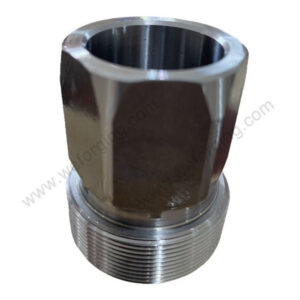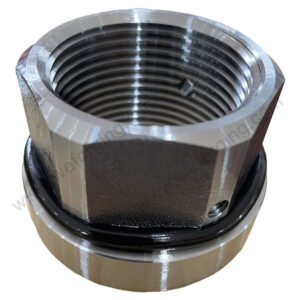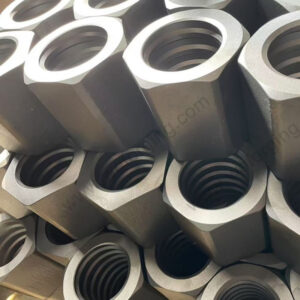Weforging ist ein weltweit tätiger Hersteller und Exporteur von Muttern und Schrauben, kundenspezifischen Verbindungselementen und geschmiedeten Gewindekomponenten. Wir liefern geschmiedete und präzisionsgefertigte Schrauben- und Mutternbaugruppen an Kunden in ganz Europa und Nordamerika. Unsere Produktion ist auf Kaltumformung, Warmumformung und Kaltstauchen für industrielle und strukturelle Anwendungen spezialisiert.
Maßgeschneiderte Schrauben- und Mutternlösungen
Wir produzieren sowohl Standard- als auch maßgeschneiderte Muttern- und Schraubentypen, darunter:
- Sechskantmuttern, Sicherungsmuttern und Gewindebefestigungen
- Hochleistungsbolzenmuttern und Baugruppen
- Lösungssichere Sicherungsmuttern und Sicherungsmuttern
- Kundenspezifische Legierungsbefestigungselemente für Ölfelder, Automobilindustrie und Bauwesen
Alle Komponenten sind mit Oberflächenbeschichtungen wie Verzinkung, Phosphatierung oder Schwarzoxid erhältlich.
Schmiedekapazitäten für Verbindungselemente
Weforging betreibt eine spezielle Schmiedelinie für Verbindungselemente, die für folgende Aufgaben ausgerüstet ist:
- Kaltumformung von Aluminium und Kohlenstoffstählen
- Nahezu netzwerkförmige Formgebung durch Kaltstauchen
- Massenproduktion mit minimalem Materialverlust
- Vergleichende Verfahren zwischen Warm- und Kaltumformung
Wir sind in der Lage, Ihnen zu erklären, was Kaltumformung ist und wie sie sich im Vergleich zu Guss oder Zerspanung für zugkritische Anwendungen verhält.
Unsere Bolzen- und Mutternschmiedelinien unterstützen die vollständige Werkzeugkonstruktion, die Einrichtung von Folgeverbundwerkzeugen und die Serienfertigung für globale Lieferketten.
CNC-Bearbeitung und Gewindeschneiden
Nach dem Schmieden werden die Verbindungselemente präzisen Bearbeitungsvorgängen zum Gewindeschneiden, Nutenfräsen und Flachformen unterzogen. Unsere CNC-Zentren gewährleisten:
- ISO-Standardgewinde (UNC/UNF/metrisch)
- 100 % geprüfte Abmessungen und Passgenauigkeit
- Hochgeschwindigkeitsgewindewalzen oder -schneiden
- Hochpräzise Befestigungsbolzen, Muttern und Montagevorrichtungen
Wir bieten auch technische Zeichnungsprüfungen und schnelle Prototypenentwicklung für OEM-Anforderungen.
Warum Weforging wählen?
Als Befestigungselementelieferant mit jahrzehntelanger Erfahrung bietet Weforging:
- Integrierte Produktion von Muttern und Schrauben
- CNC-Präzisionsbearbeitung nach dem Schmieden
- Rückverfolgbarkeit für Aufträge aus der Luft- und Raumfahrt sowie der Automobilindustrie
- Schnelle Lieferzeiten und weltweiter Export-Support
Ganz gleich, ob Sie amerikanische Befestigungselemente in großen Mengen oder projektspezifische Schrauben- und Mutternsätze benötigen – wir liefern Qualität und Leistung.
Anwendungen und Branchen
Unsere geschmiedeten Verbindungselemente werden in folgenden Bereichen eingesetzt:
- Windturbinenflügelsysteme und Verankerungspunkte
- Schwerlastgeräte und Tragwerke
- Fahrzeugchassis und Antriebskomponenten
- Druckbehälter und Flanschverbindungen
Alle Produkte entsprechen den internationalen Spezifikationen und den Anforderungen der Kundenzeichnungen.
Kontakt
Fordern Sie ein Angebot an oder senden Sie Ihre technischen Zeichnungen an:
wf-kevin@outlook.com




